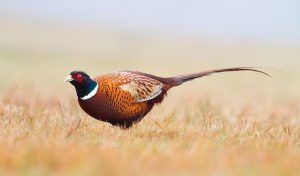
33 interesting facts about roosters
- 👁️ 1431
Roosters, with their striking presence and early morning calls, have been symbols of awakening, courage, and pride across cultures for centuries. These birds, male chickens, are not just farmyard staples but carry rich significance in folklore, tradition, and even modern urban environments. Their unmistakable crowing at dawn, vibrant plumage, and sometimes fierce demeanor make them compelling subjects of study and admiration. Beyond their symbolic importance, roosters play a crucial role in the social structure of the chicken flock and have fascinating behaviors and physical attributes that many may not be aware of. Here are 33 interesting and informative facts about roosters that showcase their importance in agriculture, culture, and beyond.
- Roosters are male chickens, scientifically known as Gallus gallus domesticus.
- They are known for their distinctive crowing, which can occur at any time of day but is most commonly heard at dawn.
- A rooster’s crowing serves multiple purposes, including asserting territory, deterring rivals, and signaling to hens.
- The size and color of a rooster’s comb and wattles are often indicators of his health and virility.
- Roosters have a natural instinct to protect their flock and will confront predators and threats to their hens.
- They are polygamous animals, typically mating with several hens to ensure the continuation of the flock.
- The term for a young male chicken is “cockerel,” while a mature male is called a “rooster.”
- Some breeds of roosters are known for their long, flowing tail feathers and vibrant coloration.
- Roosters perform a dance, known as tidbitting, involving making sounds and moving their head up and down to attract hens.
- The spurs on their legs are used in defense against predators and rivals.
- Certain breeds of roosters are specifically raised for cockfighting, a practice that is illegal in many countries.
- The rooster is one of the 12 animals in the Chinese zodiac, symbolizing honesty, fortitude, and luck.
- In many cultures, the rooster symbolizes the start of a new day and is associated with the sun.
- Their crowing has been the subject of numerous studies to understand its impact on human and animal behavior.
- Roosters have a pecking order within their flock, establishing a hierarchy of dominance.
- The lifespan of a rooster varies by breed but can range from 5 to 8 years on average.
- They have a keen sense of hearing and can detect sounds of predators or danger from significant distances.
- Roosters are often depicted in art and literature as symbols of bravery and vigilance.
- The practice of keeping roosters in urban and suburban settings has become more popular, though it is regulated in many areas.
- A rooster’s diet is similar to that of hens, consisting of grains, seeds, insects, and occasionally small animals.
- Their crowing at dawn is not triggered by the rising sun but by their internal biological clock.
- In some religions, the rooster is a sacred animal and is associated with spiritual awakening and enlightenment.
- Roosters have been used as weather vanes on church steeples and buildings for centuries, symbolizing their watchfulness.
- Their feathers are used in various cultural ceremonies and as materials for fly fishing lures.
- The Guinness World Record for the longest crow by a rooster is 15 minutes and 40 seconds.
- Some roosters are known for their ability to remember and recognize individual human faces.
- The comb and wattles help regulate body temperature by releasing excess heat.
- Roosters can mate up to 30 times a day to ensure the fertilization of the eggs laid by hens.
- In many countries, the rooster is a national symbol representing strength and resilience.
- Genetic studies have shown that domesticated chickens, including roosters, originated from the red junglefowl of Southeast Asia.
- The term “rooster” originated in the United States as a puritanical substitute for the original English “cock.”
- Roosters play a significant role in pest control by eating harmful insects and small rodents.
- Despite their aggressive reputation, roosters can form strong bonds with humans and display affectionate behavior.
Roosters, with their bold and colorful appearance, have fascinated humans for millennia, serving not only as a crucial part of the farmyard but also enriching our cultural and spiritual lives. Their distinctive crowing marks the beginning of the day, symbolizing light, hope, and vigilance. Through their behaviors and the roles they play within both the animal kingdom and human society, roosters remind us of the intricate connections between nature and culture. Understanding and appreciating these magnificent birds allow us to acknowledge their contribution to our world’s biodiversity and cultural heritage.











